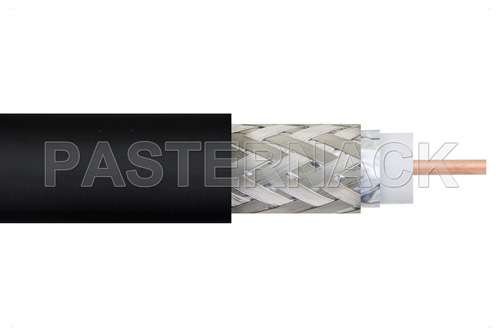 In the previous portion of the “Coaxial Cable Power Handling” blog series, we discussed an overview of coax power handling and how cable power handling impacts cable choice. In this portion of the blog series, we will take a deeper look into how cable size and type, as well as signal frequency and electron velocity through a coaxial cable, relate to a coaxial cable’s power handling capability.
In the previous portion of the “Coaxial Cable Power Handling” blog series, we discussed an overview of coax power handling and how cable power handling impacts cable choice. In this portion of the blog series, we will take a deeper look into how cable size and type, as well as signal frequency and electron velocity through a coaxial cable, relate to a coaxial cable’s power handling capability.
Cable Size and Type
Different types of coax cable are used for specific applications and the specifications help to determine the recommended or required coaxial type. For example, in microwave applications where very low loss is needed, a semi-rigid coaxial RF cable with a solid copper outer sheath may be preferred as it offers superior screening compared to RF cables with a braided outer conductor, especially at microwave frequencies.
Although the power handling capability of RF coaxial cable is not a concern for many installations, when using medium or high power transmitters, the power rating or handling capability of RF coaxial cable must be considered. In applications where high power is used, ordinary polyethylene might melt and distort the cable therefore cables with an air dielectric with the center conductor held in place by a dielectric coil that runs along the length of the cable is preferred.
For medium to high power applications, coaxial cables with a Teflon dielectric are preferred as these can withstand high temperatures up to around 160°C. When considering which cable to use, it should be remembered that as the frequency increases the skin effect becomes more pronounced, and coupled with increased losses in the dielectric, this limits the power handling capacity.
Frequency and Velocity
When considering wave propagation over a cable, the creation of higher modes can degrade efficiency, produce higher reflections, and mitigate the power handling capability of the coaxial line. As power is inversely proportional to frequency, the higher the operating frequency, the lower the power capacity of the coaxial line. Length of the cable can mitigate the power handling capability and coaxial cables are often cut to a specific length to act as an impedance transformer or a resonant circuit. If resonant lengths of RF coaxial cable are used, it is necessary to know the velocity factor of the cable.
The velocity factor specifications of a coaxial cable is the speed at which the signal travels within the cable compared to the speed of the signal in a vacuum. The velocity factor specification is a figure which is less than 1. The dielectric between two conductors indicates the velocity factor; coaxial cables composed of a solid polyethylene dielectric will have a velocity factor around 0.66, and those made of foam polyethylene will have velocity factor figures ranging from about 0.80 to 0.88.
For a detailed look at the data used to develop recommended maximum power ratings for RF coaxial cable power handling, see Power Handling Capabilities of RF Coaxial Cables, 1971, http://www.dtic.mil/dtic/tr/fulltext/u2/912072.pdf. in which “representative coaxial cable types were subjected to high power CW and pulse tests” which were “conducted over a range of frequencies and ambient temperature and pressure attitudes.”




 Pasternack Blog
Pasternack Blog
